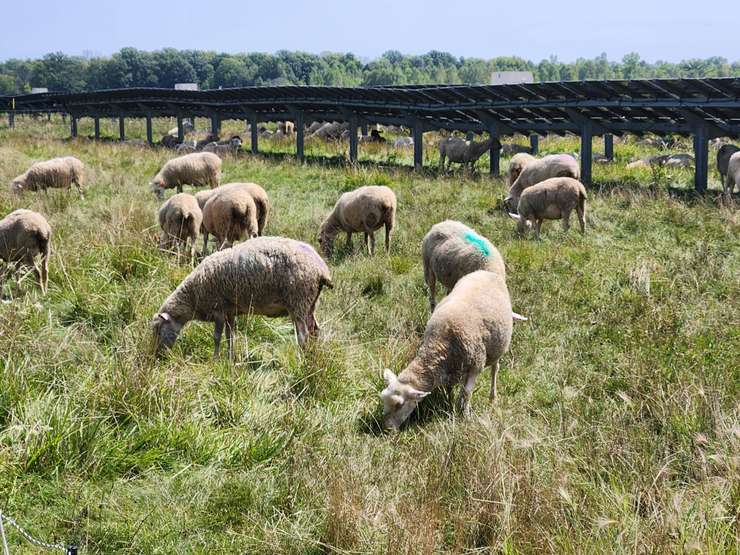If "ewe" have taken a drive past Enbridge’s Sarnia Solar Project this summer, you may have noticed some fluffy groundskeepers maintaining the property.
This year, for the first time, the company partnered with Shepherds Brent and Meika Pelleboer who own Angus Farms in Camlachie.
As part of the pilot project, the Pelleboers brought around 270 Rideau Arcott sheep to an 85 acre section of the 1,100 acre property back in April.

The sheep, protected by guard dogs Ivy and Ned, have been hard at work eating the grass and weeds that grow under and between the solar panels.
They could eliminate the need for pesticides, and also support the growth of native flowering plants like clover, which are preferred by insects, including bees.
Brent Pelleboer said there are a few benefits to letting the sheep graze on the property.
"There's a lot of feed here for the sheep under the panels that would otherwise just get cut by a lawn mower," said Pelleboer. "We can utilize a lot of that feed really well. Plus, the sheep do a really good job of grazing underneath the panels. The panels also provide a lot of benefit to the sheep as far as giving them shade in the heat."
Pelleboer said the sheep will take just about two months to cover the entire acreage.
"We give them about five acres at a time, and that will last them for three to five days, and we just keep moving them," he said. "In about a month, grass will start to slow down growing. They'll finish cleaning up whatever grass is here, and then probably by mid to late fall they'll be done and come home for the winter."
Enbridge Sarnia Solar Project Operations Supervisor Ian Robertson hopes to see the novel approach continue in the future.
"This type of program exists in Europe quite heavily, especially in the solar arrays," said Robertson. "Canada does have it throughout little pockets of Alberta. But, certainly it's new in the Enbridge world. It's a pilot project for us that I hope continues. I am happy that things have worked out great, and we've already agreed to terms for next year."
Robertson said debris from conventional mowers can damage panels and there’s risk from motorized equipment igniting dry vegetation.
"It's nice to meet two diligent shepherds that really want to keep working with what they can find," he said. "They approached me with this idea, and I can't speak highly enough about what they've done here."
He said when Enbridge started operations at the farm in 2008, they made sure to plant native species and restore woodlands and wetlands.
Six years ago, the company installed five full honeybee colonies—an estimated total of 400,000 bees—as part of an ongoing pollinator program.
Overall, Enbridge’s Sarnia Solar Project, located off Blackwell Sd. Rd., houses about 1.3 million solar energy panels and generates 80 MW of electricity.
The power helps to service around 14,000 residential homes in the area.
